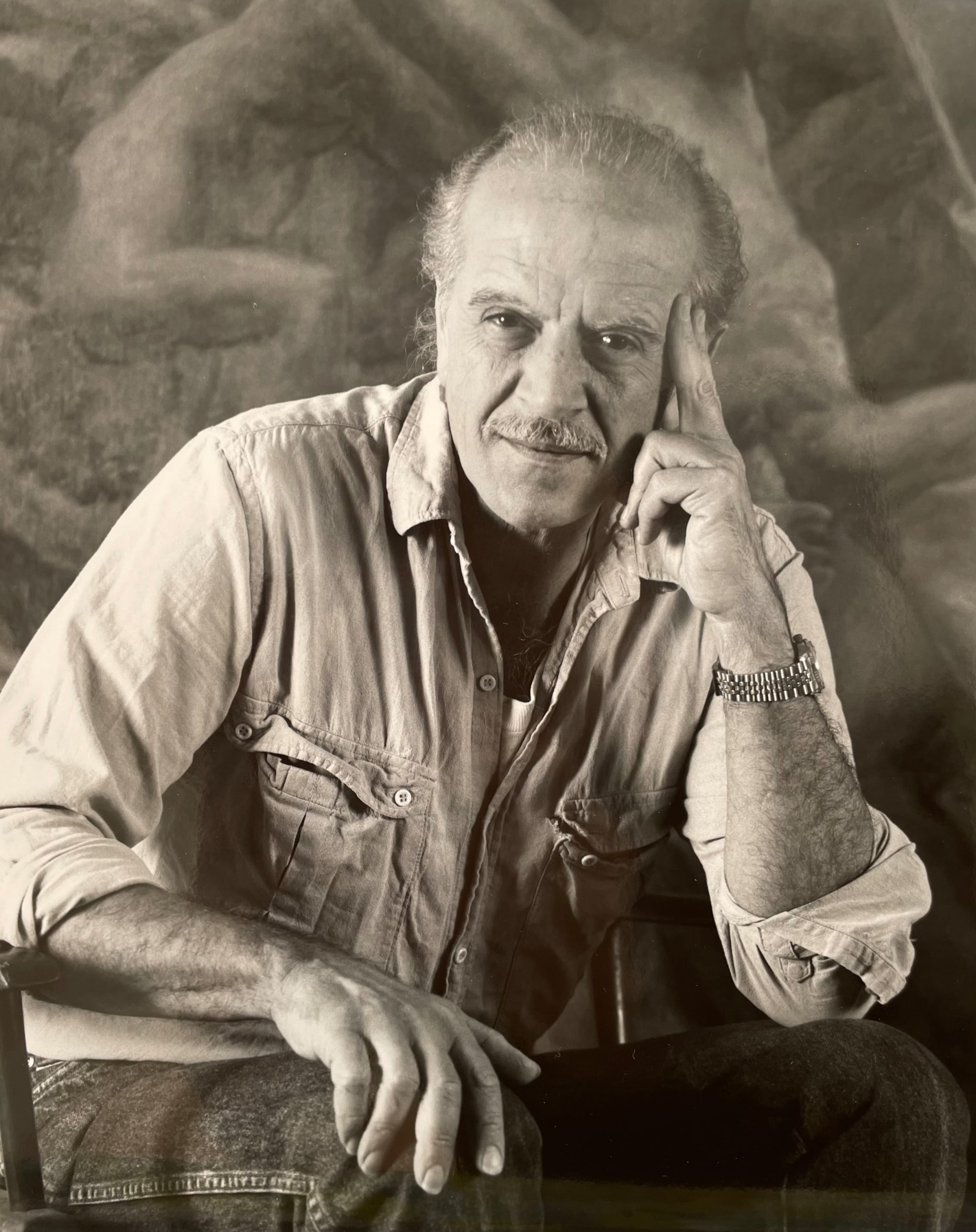
Rodolfo Abularach (January 7, 1933 - August 30, 2020). Considered one of the most illustrious Masters of Latin America and whose works are included in the permanent collections of prestigious art museums such as the Metropolitan Museum of Art of New York, the MoMA - Museum of Modern Art of New York; the AMA - Museum of the Americas, Washington D.C.; LACMA - Los Angeles County Museum of Art, Los Angeles, California; Lowe Art Museum, Miami; Museum of Modern Art in Bogotá, Colombia; Museum of Contemporary Art, Sao Paulo, Brazil; Musée d'Art et d'Histoire, Geneva, Switzerland; Royal Museum of Art, Copenhagen, Denmark; Museum of International and Contemporary Graphic Arts, Fredrikstad, Norway; just to name a few.
Born in Guatemala, he began his formal artistic training at the Escuela Nacional de Artes Plásticas in Guatemala City in 1946 and later studied abstract design at the Escuela de Arquitectura. In 1958, he traveled to New York with a scholarship from the Directorate of Fine Arts of Guatemala and extended his stay through a succession of scholarships, including 2 scholarships from the Simon Guggenheim Foundation, establishing his residence in that city until 2005.
Beginning in the mid-1960s, he won international recognition with his dramatic works of the human eye. For nearly two decades he continued to meticulously explore the "Eye" until, in the mid-1980s, Abularach shifted his gaze from the eye inward, outward, toward the landscape.
In 1998, he was part of the intervention for the restructuring of the National School of Plastic Arts of Guatemala and in the year 2000, he was appointed as Director of the said school.
He participated in more than 100 individual exhibitions since 1947 and won numerous awards, beginning in 1959 with the First Prize for Painting at the National Contest of Sciences, Letters and Fine Arts in Guatemala; the Prize at the Fifth Biennial of Sao Paolo, Brazil; First Prize for Drawing at the San Francisco Museum of Art, San Francisco, California; and Carlos Mérida National Prize in Guatemala.
Abularach's works are part of many important collections around the world. For more information, visit our Web Page: RodolfoAbularach
Statement
Thoughts about my work
By Rodolfo Abularach, New York, November 6, 1991
For me, art is a form of individual knowledge. I draw inspiration from both the archaic past and the chaos of the present. I am interested in universal themes, fundamentally human.
From the second half of 1976, I experimented again with various materials and working methods, while continuing to paint and print the image of the eye. I decided to paint without preconceptions or technical preparations, manipulating the materials freely and letting the works be carried out through a dynamic process. I tried to free myself from conceptual ties or formal identifiers, preventing the intervention of thought and memory as far as possible and giving flight to the creative imagination without having any idea of the final result.
In these works, there is an affinity with the landscape, not as a faithful copy of appearances, but rather with its internal rhythms and sensitive associations. These are intimate encounters with nature. The ambiguity of the forms in these landscapes contributes to creating a magical atmosphere, perhaps because strange figures and faces can be discovered intertwined in the brushstrokes and textures.
In some cases, I took advantage of the rough material of previous paintings worked densely with a spatula or brush, thus achieving very suggestive effects, different from the material paintings I worked between 1959 and 1961. Some of these works have been intentionally elaborated in detail. Since that time and especially now, I continue to investigate the expressive possibilities of the figure, achieving plastic solutions.
In recent years I have been painting the luminosity and dramatic contrasts of the fire element, taking inspiration from Dante's "hell", from "Xibalba" (hell of the Quiches) from the Popol Buj stories, from the igneous force of eruptions volcanoes, in ecological destruction and in wars: in other words in the Apocalypse.
I am interested in everything that affects our world, there are too many machines and we forget the human aspect. I feel it is necessary to return to the essential, to nature, renewal is necessary. We have become too dehumanized. The art object has become an economic commodity. Repetition, banalities, children's babble are applauded. Innumerable superficial objects are produced, an art is made that has lost its deep and transcendent meaning. Art is one of the few corners left to the human being to affirm his freedom. Freedom is not static or accommodative, on the contrary, it requires risk and courage. It is done within a constant transformation.
To be truly creative, both internal and external chains must be broken. Only in this way is it possible to travel on the path of creative freedom.
All images rights reserved to Estate Rodolfo Abularach
